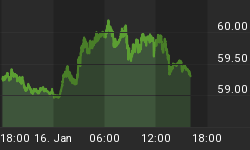Based on the August 2014 Market Overview report
It is important to review the minutes released recently by the Fed, since they may well signal a turning point in monetary policy. The programs of active purchasing of government debt and commercial assets may be curtailed. Yet, as we have often discussed at length, it is not the most important element. There are other factors of monetary policy to be considered: interest rates for one, and the Federal Open Market Committee suggested they may start to discuss interest rate hikes. The so called taperie (small version of tapering) process discussed earlier in the Market Overview appears to be slowly finalizing:
Members judged that the economy had sufficient underlying strength to support ongoing improvement in labor market conditions and a return of inflation toward the Committee's longer-run 2 percent objective, and thus agreed that a further measured reduction in the pace of the Committee's asset purchases was appropriate at this meeting. Accordingly, the Committee agreed that beginning in July, it would add to its holdings of agency MBS at a pace of $15 billion per month rather than $20 billion per month, and it would add to its holdings of Treasury securities at a pace of $20 billion per month rather than $25 billion per month.
The famous (and infamous) program of asset purchases finally seems set to fade away. Each month the Fed plans to buy fewer and fewer securities. 15 billion dollars per month will be turned down in October probably at once. Another option is to decrease the buying program to 5 billion dollars, and then terminate it the next month. But it seems a minor technical issue, and most of the members agreed to turn off the program at once. There are no possible huge macroeconomic consequences of this slight difference, hence there is no reason to linger on with these 5 billion for another month to come. In case that happens, it will still have a negligible effect.

As we emphasized many times those asset purchasing programs were highly overrated by the public. This was mainly because the most active side of monetary policy performed by the Fed involved low interest rates and the great expansion of Fed's balance sheet through various operations (not only the ones associated with the asset purchase program). The absurdly low interest rates added to existing problems and supported the weaknesses of the current system. Boosted balance sheets on the other hand, combined with the lowered interest rate, were strategies that had been the major program for stimulation. It had started way before we heard about Ben Bernanke's special programs to invest in securities. After the Lehman collapse the Fed had already started it combined with interventions having differing recipes on how to boost the falling market. It all resulted in colorful expansions of balance sheets. The asset purchase program had impressive press and publicity but depicted only part of what has been going on. Quantitative Easing was actually way larger than what had been described. It went well beyond what is being said.
We can put aside, then, monthly purchases of securities. Now the big questions to be faced by the Fed are the questions of "monetary policy normalization". That is - how do we get out of the current boosted balance sheet and absurdly low interest rates without panicking the market, which has flirted with over-indebtedness for a long time? What do we have to hear about that?
Participants also discussed the appropriate time for making a change to the Committee's policy of rolling over maturing Treasury securities at auction and reinvesting principal payments (...)
Regardless of whether they preferred to introduce a change to the Committee's reinvestment policy before or after the initial tightening in short-term interest rates, a number of participants thought that it might be best to follow a graduated approach with respect to winding down reinvestments or to manage reinvestments in a manner that would smooth the decline in the balance sheet.
Here is where it gets interesting. The Fed is emitting two signals with these minutes. First of all, it reminds us that there is such a thing as non-zero interest rates (positive), which can be set by the central bank. Second of all, it reminds us that the central bank does not have to be a pawnshop of last resort, which increased its balance sheet to dangerous levels. Two adjustments need to be made for the market economy to function as regular and the Fed is aware of that. The interest rates have to go back to positive levels, and the balance sheet of the Federal Reserve has to be significantly decreased. Things are not normal yet, and there is a long, bumpy road ahead.
What are the conclusions to be drawn from minutes for the gold market? This time the Fed appears to sincerely believe that better times are back on the horizon. Naturally the Fed constantly tries to assure us that good times will soon be back, but for the last couple of years one could see them as a sort of masquerade in order to boost optimism in the markets. Right now the statements appear as more honest; the members apparently believe in the recovery more. The big question is: do the good times herald bad times for gold? Not necessarily so. At lot of speculation about gold as an absolute substitute for paper dollar assets has burst with the last gold meltdown from the previous year. Just as gold, during the Greenspan bubble, was a good asset, similarly gold does not have to be unwanted during the slight recovery we may experience. And let us add: a recovery about which we remain suspicious.
Thank you.
If you enjoyed the above analysis, we invite you to read the full version of the above report in the Market Overview section on our website.
















